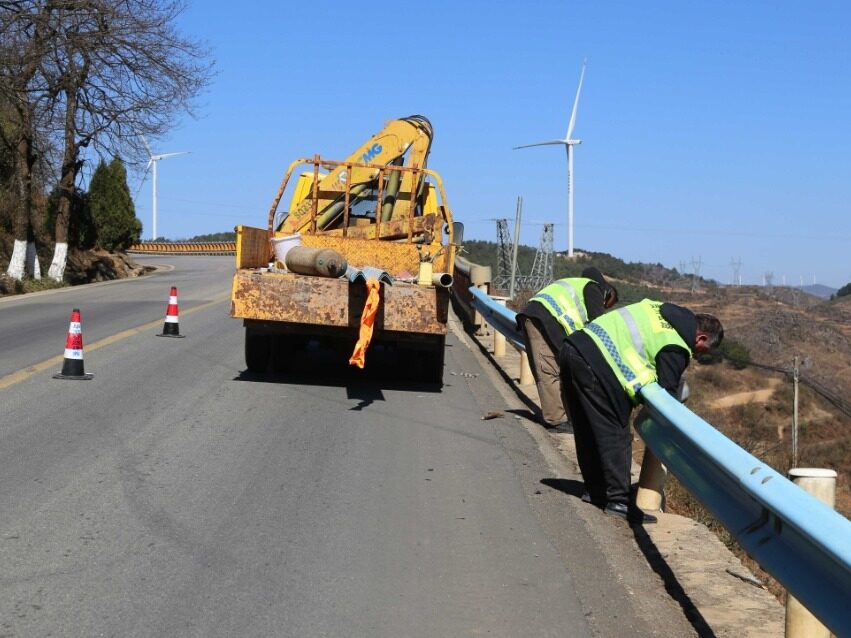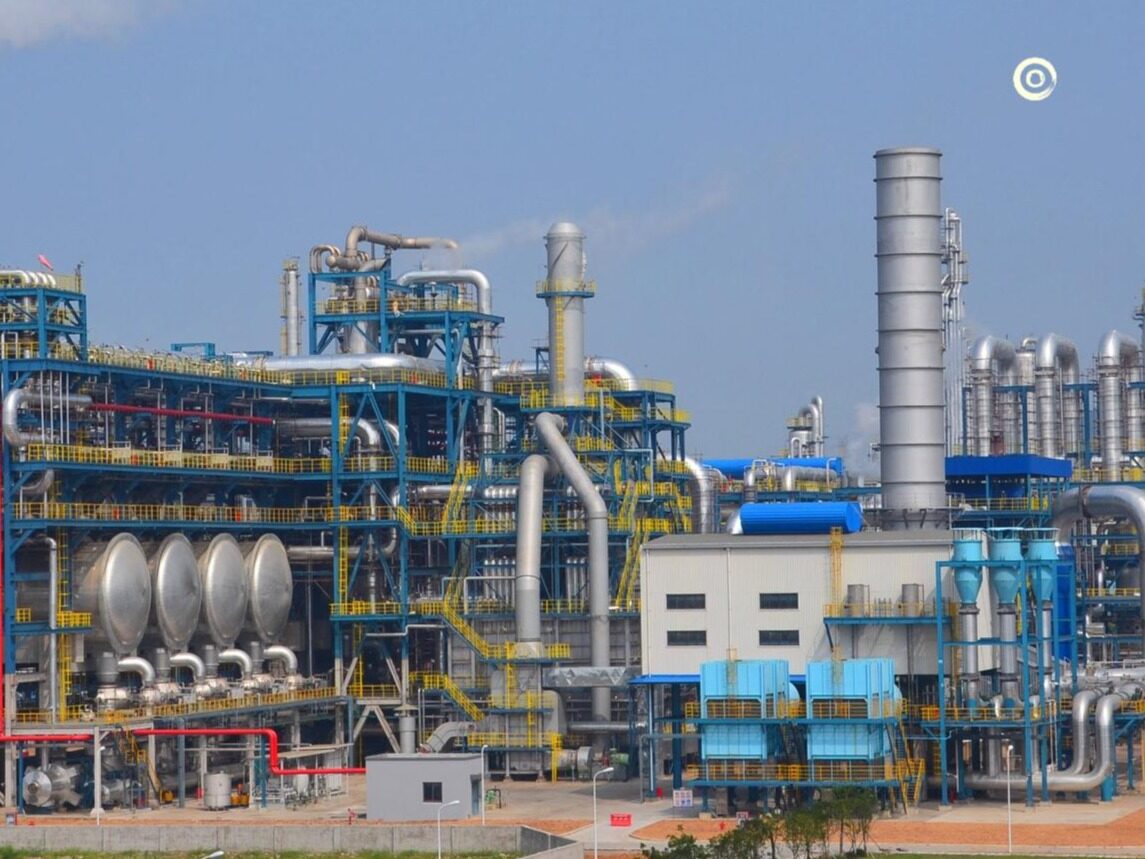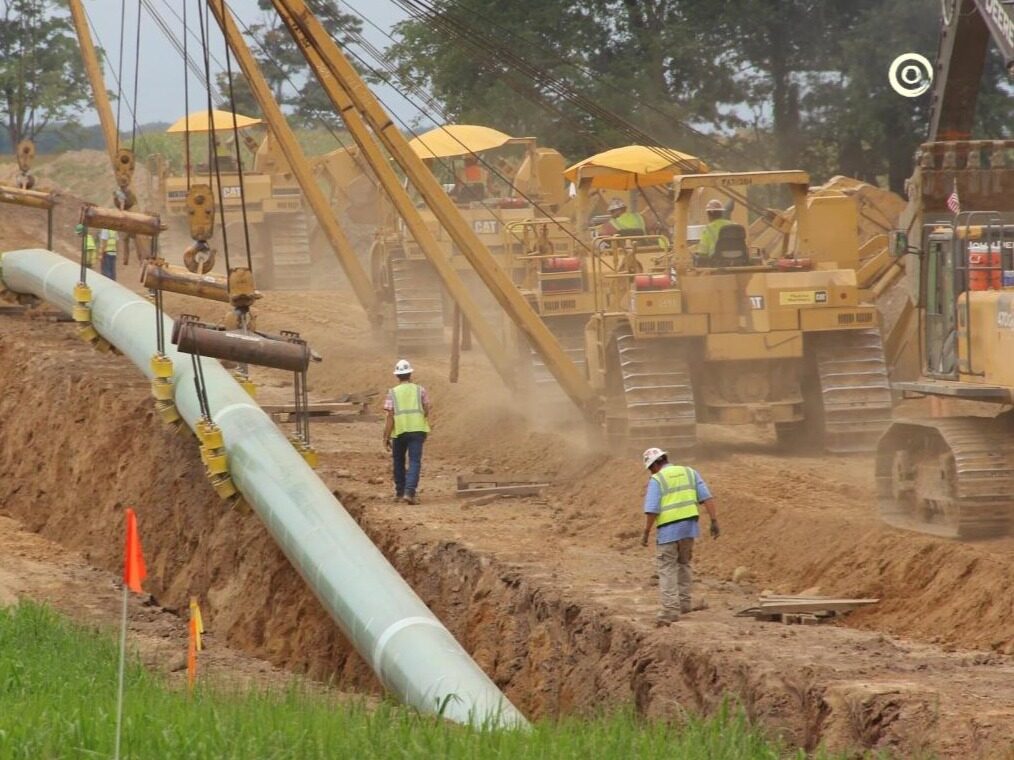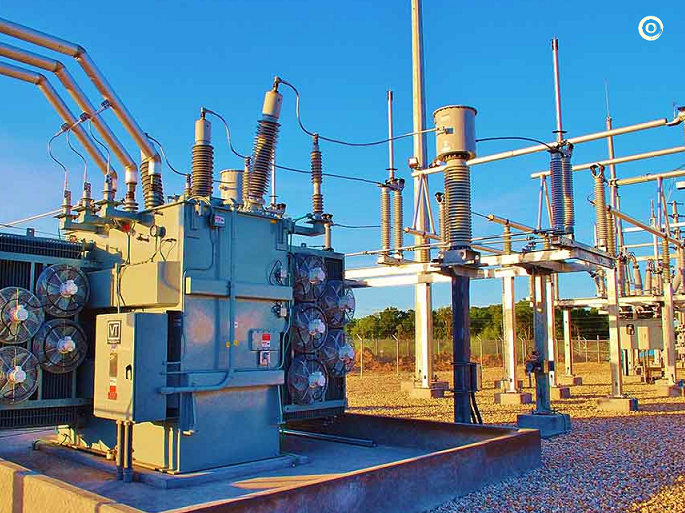- Guangzhou Port will give full play to the supporting and leading role of major projects in high-quality development

On the morning of June 23, 2021, 6 container trailers with safflower and full of cargo entered the gate in an orderly manner, and then drove into the warehouse on the 6th floor of the warehouse via the circular lane that spiraled upwards. The forklift unloaded the first cargo on the trailer into the gate. In the warehouse, it was announced that the warehouse in the north area of Guangzhou Nansha International Logistics Center with a warehouse capacity of 252,000 tons was successfully opened and put into production. This also marks a substantial breakthrough in the construction of the largest port-based warehousing logistics distribution center in the Nansha Port Area of Guangzhou Port, which will provide solid support for the high-quality development of the Guangzhou port-type national logistics hub. Play an active role in the smooth operation of the industrial supply chain.

At the same time, Guangzhou Port successively ushered in the trial production and delivery acceptance of key port projects on the eve of July 1st: the first fully automated terminal in the Guangdong-Hong Kong-Macao Greater Bay Area Nansha Phase IV project multi-system joint commissioning successfully and the delivery acceptance of the No. 1 marine berth , Jinyang Wharf project realized the successful berthing of the ro-ro ship "Anji 26", and the Xinsha Phase II project realized the first berthing of the grain bulk carrier "COFCO Southeast". The four major port key projects are all key port projects of the Ministry of Communications, provinces and municipalities, with a total investment of 14.5 billion yuan, covering a comprehensive port logistics service system in multiple aspects such as containers, grain, commodity vehicles, and comprehensive warehousing logistics. Both the Nansha Phase IV project of the fully automated terminal that interprets the "high-precision" technology of China's smart port (new annual container handling capacity of 4.9 million TEU), and the Xinsha Phase II project to help stabilize food security in South China (after completion) Increased annual grain handling capacity of 5.6 million tons and containers of 500,000 TEU); not only has the Nansha Logistics Park, the largest port warehouse group in the country, which extends the port service chain (new warehouse capacity of 252,000 tons), but also empowers the country's largest automobile hub After the completion of the near-ocean wharf project on the island, the annual passing capacity of Guangzhou Port will exceed 2 million vehicles.
Li Yibo, Secretary of the Party Committee and Chairman of the Guangzhou Port Group, said that the scale of the key port projects that have been completed and put into production this time, the wide range of fields involved, and the finest technical requirements have all exceeded the history of the construction of the Guangzhou Port. A great gift to celebrate the centenary of the founding of the party. After the project's capacity is formed, the capacity of Guangzhou Port's grain, container, commodity truck, and integrated storage and logistics hub will usher in a qualitative leap. Guangzhou Port will give full play to the supporting and leading role of major projects in high-quality development, promote the overall improvement of the energy level of Guangzhou's international shipping hub, ensure the stable and unblocked supply of civilian resources and the supply chain of the industrial chain in South China, and better serve the Guangdong-Hong Kong-Macao Greater Bay Area, etc. National strategy to fully participate in international economic cooperation.
It is reported that since 2021, Guangzhou Port Group has gone all out to do a good job in epidemic prevention and control and port production and operation, and earnestly implement the "three guarantees" work to ensure the stability of epidemic prevention and control, the smooth flow of goods in the port, and the orderly social transportation. Give full play to the advantages of Guangzhou Port's comprehensive capabilities and collection and distribution network, strengthen communication and coordination with shipping liner companies, port units, industry authorities, and customers to overcome the impact of the epidemic and ensure the smooth operation of the port. Since the beginning of this year, Guangzhou Port Group's cargo throughput and container throughput have achieved steady growth. 14 new container foreign trade routes have been added. Up to now, there are 179 container routes, including 134 foreign trade routes. The function of Nansha Port Area's international shipping hub has been further enhanced. Relying on Guangzhou Port’s existing location, collection and distribution and resource advantages, the four key projects will be put into use in concert to bring out the effect of co-frequency resonance, enhance the overall international competitiveness of the port, and provide comprehensive services to the Guangdong-Hong Kong-Macao Greater Bay Area and build a world-class Qianggang provides a new engine to fully assist Guangzhou in building a hub city, building it into a major domestic circulation center node city and a domestic and international dual-cycle strategic link city.
Investment in four key projects of Guangzhou Port 14.5 billion
The construction area of the North District project opened and put into production is 314,000 square meters. There are three 6-storey disk warehouses and one supporting building, with a total investment of nearly 1.7 billion yuan. The overall idea of Nansha International Logistics Center (North District) is to build a "Bay Area International Consolidation Center", with its business functions mainly exporting and importing supplemented. It covers project logistics, buyer export consolidation, export distribution centers, bulk export consolidation, international transit consolidation, new business forms of cross-border e-commerce logistics, and sea-rail combined transport logistics services. After the project is put into production, a huge radiating "magnetic field effect" will be formed, and the project will cover the Guangdong-Hong Kong-Macao Greater Bay Area and major cities in the Pearl River Delta within 100 kilometers. The Guangzhou Nansha International Logistics Center project is adjacent to the Nansha Phase III terminal. The logistics center (north area) is equipped with a southern container loading and unloading yard connected to the Nansha Port Railway, which can smoothly achieve seamless connection with the port section, and cargo can be transported smoothly and conveniently to the southwestern region. , And even Europe and Southeast Asia. The seamless connection of "roads, water transportation, and railways" will greatly reduce the overall logistics operation costs of enterprises, provide a more stable southbound logistics channel for import and export enterprises in southern China, and promote the construction of a higher quality international shipping logistics center in Guangzhou, and participate in the area. Constructing and serving the new development pattern of domestic and international "dual cycle" along the way.

The Nansha International Logistics Center project is divided into two areas, the south and the north. The project is located on the inland side of the third phase of the Nansha Container Terminal in Nanshalomxue Island, Guangzhou. The east and north sides are adjacent to the port area, and the west side is Haigang Avenue. The total construction area is about 950,000. Square meters, with a total warehouse capacity of 712,000 tons, it is currently the country's largest port warehouse group. The southern area project (Guangzhou Nansha International Cold Chain Project), which is more than 200 meters away from the northern area project, is the “siege city” project and the key “vegetable basket” project in Guangzhou. The total storage capacity of the project is 460,000 tons and the estimated investment is 1.874 billion yuan. Positioned as a comprehensive cold chain logistics base with the function of the largest port-based distribution hub cold storage in the country. As the number one “people’s livelihood” project in the Nansha port area of Guangzhou Port, the logistics center southern area project is the “chain master” unit of the agricultural product supply chain, which is conducive to promoting the large-scale development of the “integration of production and marketing” of agricultural products in South China, opening up the entire supply chain of agricultural products and allowing Imported fruits and vegetables and other agricultural products are collected and distributed in the Nansha Port Area to help citizens continue to enrich their "vegetable baskets" and drive cold chain business and regional economic development and take-off.
Guangzhou Port adheres to the concept of creating a low-carbon and environmentally friendly green logistics park. It has built more than 60,000 square meters of photovoltaic power generation facilities on the roof of the warehouse of Nansha International Logistics Center. % Above, the total power generation during the operation period is expected to reach 135.35 million kWh, which can save about 46,000 tons of standard coal and reduce carbon emissions by about 117,000 tons.

The first fully automated terminal in the Guangdong-Hong Kong-Macao Greater Bay Area was successfully integrated
On June 23, at the forefront of the Nansha Phase IV terminal, the quay crane accurately grasped the containers on the ship according to the instructions automatically issued by the information system, and automatically placed them on the unmanned intelligent guided vehicle (IGV). The IGV used intelligent algorithms to automatically The route is planned, the container is transported to the yard, the track crane is automatically aligned, and the container is automatically picked up and placed in the designated location. The entire production process was smooth and flowing, marking the successful joint commissioning of the first fully automated terminal in the Guangdong-Hong Kong-Macao Greater Bay Area-Guangzhou Port Nansha Phase IV Project. An era of fully automated terminal development that is leading the world and has a landmark significance has arrived.
Compared with the previous automated docks using magnetic nail navigation, by arranging magnetic nails on the dock ground, the automatic guided vehicle is equipped with a radio frequency antenna to induce the navigation mode of the magnetic nail tracking. The fourth phase of Nansha project adopts the world's first "Guangzhou solution" of "automated quay crane with single trolley, intelligent truck for Beidou navigation, lateral loading and unloading of yard horizontally arranged, and full automation of the port area". It is a set of completely independent intellectual property rights in my country. system.

According to the relevant person in charge, the layout of the current container terminal yard is mainly horizontal, and the automated terminals built at home and abroad are basically vertical. If the horizontally arranged storage yard is to be transformed into a vertical arrangement, the investment in the transformation of the infrastructure is very huge, and the transformation is also very difficult. The automation construction plan of the Nansha Phase IV terminal is not only the first in the world in terms of model, but can be replicated on a large scale, but also provides a technical reference for the automation upgrade and transformation of the traditional container terminal with the horizontal layout of the yard, and is the development of the automation terminal of the entire port industry. Provides a lower cost solution. Under the same scale, the intelligently transformed terminal saves about 70% of manpower. A few days ago, the No. 1 marine berth of the Nansha Phase IV Project was officially handed over for acceptance, providing an important guarantee for the realization of automated joint commissioning. After the completion of the Guangzhou Port Nansha Phase IV project, the annual container throughput of Nansha Port is expected to exceed 24 million TEUs, ranking among the top single port areas in the world.
The second phase of the Xinsha project successfully trialled the ship
On June 20, with the loud whistle, the grain bulk carrier "COFCO Southeast" loaded with 50,000 tons of wheat smoothly berthed at berth No. 11 of Xinsha Wharf, marking Guangzhou Port Xinsha Port Area No. 11 and No. 12 General The berth and barge berth project (hereinafter referred to as the second phase of the Xinsha Project) has officially berthing capacity.

The second phase of the Xinsha Project is a pilot project of the Ministry of Transport's water transport project safety century-old quality project and a key project in Guangdong Province. It occupies a planned coastline length of 722m. Construction of two 70,000-ton general berths (hydraulic structures are designed and constructed according to berthing 100,000-ton bulk carriers), and four 3,000-ton general cargo berths and five 2,000-ton berths will be built in the north side of the dug-in harbor basin. Tonnage container barge berths and 4 working boat berths. In terms of warehouses, 280,000 tons of silos and 150,000 tons of mechanized silos will be built. The total land area of the project is 334,000 square meters. The project is designed with an annual throughput capacity of 5.6 million tons and 500,000 TEUs, a total berth length of 1,522 meters, and a total investment of about 2.5 billion yuan. After the completion of the project, the Xinsha Port District and surrounding grain and oil companies will form a "one-stop" industrial chain development pattern from warehousing and logistics to production and processing of "Qianganghou Factory" and "Qianganghou Warehouse" to ensure the raw material demand of end-use grain enterprises and ensure The supply chain of grain-consuming enterprises is smooth.
At present, Guangzhou Port has formed Xinsha and Xingang ports on the east bank of the Pearl River, Nansha Grain Terminal on the west bank of the Pearl River, and Maoming Guanggang in western Guangdong. The east-west echoes and benign interactions radiate the entire South China grain development layout. It has 4 specialized bulk grain berths and 12 general grain berths with a storage capacity of approximately 1.8 million tons. During the "Thirteenth Five-Year Plan" period, Guangzhou Port has accelerated the development of grain passing capacity, supporting special grain berths and warehouse resources. The market share of grain goods has been ranked first in South China. The total grain passing volume has exceeded 83 million tons, an average annual increase of 11.6. %. In 2020, the volume of grain operations completed was 17.364 million tons, a year-on-year increase of 30.1%, and the volume of grain throughput was 26.86 million tons. It ranks first in grain throughput in the country and is the largest grain unloading and storage base in South China. Combining the second phase and expansion project of the grain terminal silo constructed by Guangzhou Port in Nansha, by 2022, Guangzhou Port will have 21 10,000-ton grain and general berths. By the end of the 14th Five-Year Plan period, the grain throughput capacity will exceed 35 million tons. The storage capacity reaches 3.6 million tons, which provides a strong guarantee for national food security and stable food supply for residents, and makes a positive contribution to the social and economic development of the service area.
Near-ocean wharf has the conditions
On the morning of June 19, the "Anji 26" Ro-Ro ship safely berthed at Jinyang Wharf No. 2 berth. The first trial ship of Jinyang Wharf was a complete success, indicating that Guangzhou Port Jinyang Wharf already has the berthing capacity of large ro-ro ships. The project is expected to be completed and put into production within this year. As a provincial and municipal key project and Guangzhou’s “siege of the city” project, the near-ocean wharf project in the Nansha Port Area of Guangzhou Port has a planned total land area of 825,000 square meters, and the first phase uses a coastline of 725 meters. Two 50,000-ton general-purpose berths have been built in the project. The hydraulic structure is designed to berth 70,000-ton ships. The length of the berth is 546 meters, the water depth is -12.7 meters, and the long-term is -14.5 meters. It can berth the world’s largest ro-ro parking space of 8,000. ferry. Jinyang Terminal is committed to large-scale and intensive ro-ro car business. In the future, it will provide the loading and unloading of complete vehicles, construction machinery vehicles and parts, logistics distribution, exhibition and trade, bonded, warehousing, sales and maintenance, export of used cars and new energy vehicles, offline delivery of Internet vehicles, production, transportation and sales of major equipment and ports Check, build investment platforms, industry forums and other value-added experience services.
Keywords: engineering news, state-owned enterprise reports
Guangzhou Port Group has formed a ro-ro vehicle development pattern with "Xinsha in the east and Nansha in the west" and the two sides of the Pearl River flying together. Xinsha Wharf has 3 professional ro-ro berths, and 5 special ro-ro car berths on Shazai Island have been put into operation. After the completion of the Jinyang Wharf, the Shazai Island Automobile Operation Area in Nansha Port District of Guangzhou Port will form a group of 7 special berths for 10,000-ton ro-ro cars, a coastline of 1,800 meters, and a storage yard of over 1.6 million square meters. The largest domestic professional port area for auto ro-ro business. Through the functions of "Lingang Exhibition and Trade, Bonded Warehousing, Automobile Inspection, Investment Cooperation" and other policy advantages of the Guangdong-Hong Kong-Macao Greater Bay Area, Nansha Free Trade Zone, and Free Trade Port Zone, Nansha Shazai Island will become the country's largest automobile logistics The hub island drives the development of automobile consumption logistics throughout southern China.Editor/Xing Wentao
Comment
 Praise
Praise
 Collect
Collect
 Comment
Comment
 Search
Search














Write something~